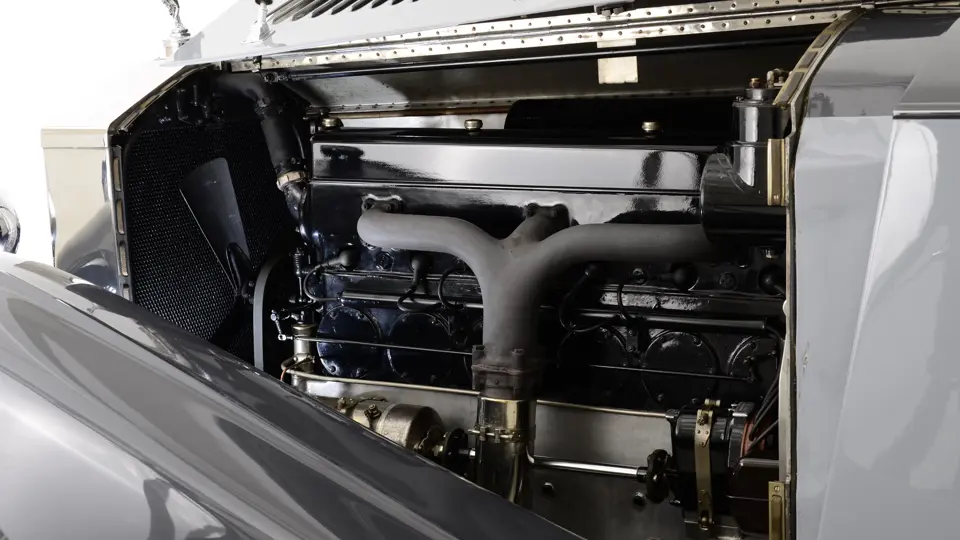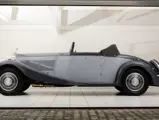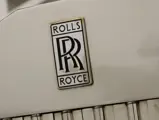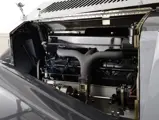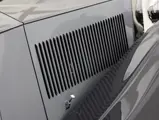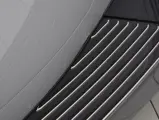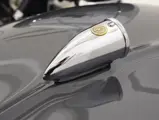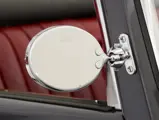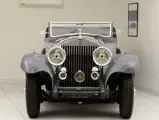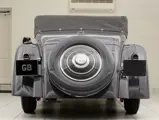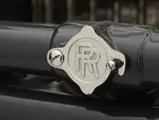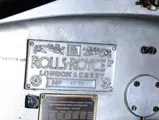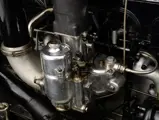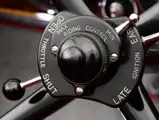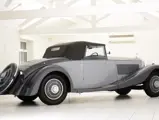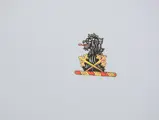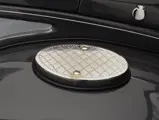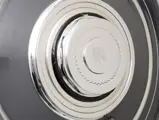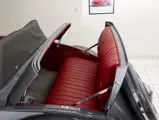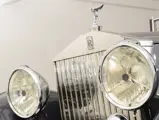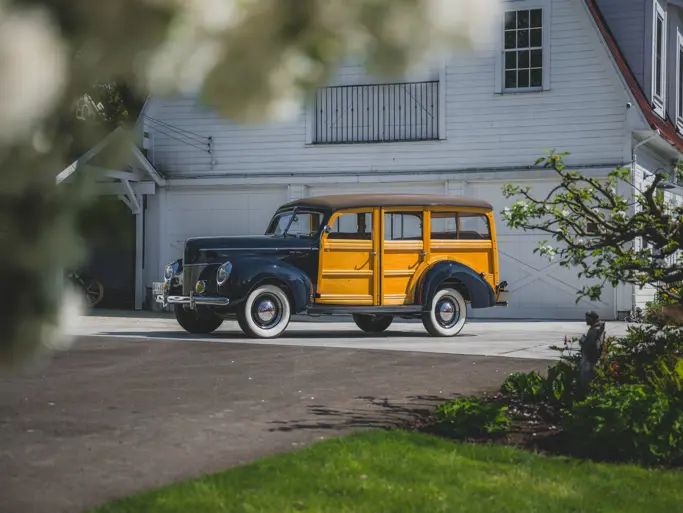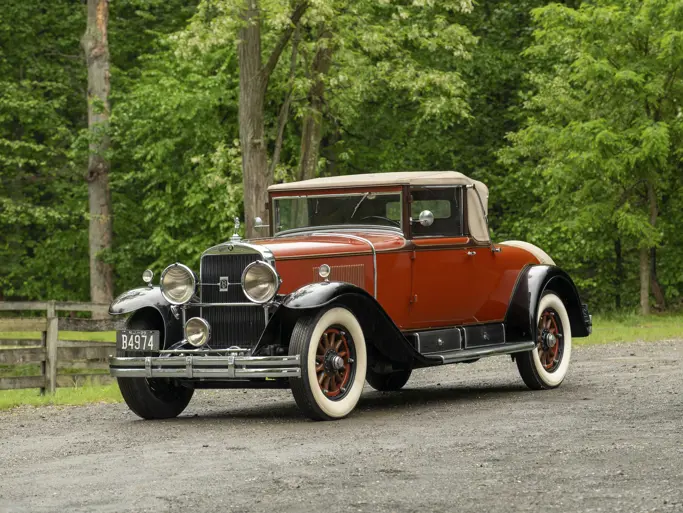40/50 hp, 7,668 cc overhead valve six-cylinder engine, dual ignition with coil and magneto, four-speed manual gearbox, solid front axle and underslung live rear axle with semi-elliptic leaf springs, four-wheel servo-assisted brakes. Wheelbase: 144"
- Desirable short-chassis Continental Drophead Coupé
- One of only three Phantom II Continentals with Freestone & Webb Drophead Coupé coachwork
- Ex-Bamford Collection
The development of Rolls-Royce Continental models is quite interesting. In September 1930, Rolls-Royce designer Ivan Evernden toured the Continent in a smart new Phantom II sports saloon. This car had been built on Henry Royce’s directions, starting with a Riley Monaco saloon as a pattern and scaled up for the PII chassis. The spare tyres were moved to the rear, and the wings were flared with their undersides exposed. Fitted with a sunshine roof, it was painted in pale saxe blue and finished with an early metallic-like clear coat made with fish scales. Evernden managed a last-minute entry in a concours d’elegance at Biarritz and came home with the Grand Prix d’Honneur. The car generated quite a buzz and considerable orders, sufficient for the factory to prepare a brochure for a Continental model, which was ready by the time Evernden returned home.
The second Continental prototype was bodied by Park Ward, and Royce was very pleased. A close relationship between the two firms resulted, but Park Ward by no means had the monopoly on Continental bodies. Others were built by Hooper and some, like this car, by Freestone & Webb.
Freestone & Webb
V.E. Freestone and A.J. Webb joined together to found a coachworks at Willesden, London in 1923. Freestone had worked at Crossley and Webb with a French coachbuilder, and they had apparently met while working at Sizaire-Berwick’s operations at Park Royal. Once out on their own, they bodied a number of Bentleys, completing about 230 before W.O. Bentley’s firm entered receivership. They began building on Rolls chassis soon afterwards and turned out some 15 bodies a year from 1929 until the onset of World War II. One of their specialities was the “Top Hat” saloon, and they also took a licence for the Weymann fabric body technique. The late coachbuilding historian Nick Walker has written that they “managed to produce some highly attractive designs, something not every Weymann builder could honestly claim.” They regularly exhibited at the London Motor Show and took the Gold Medal in the Private Coachbuilders class for nine years straight. Freestone & Webb soldiered through World War II making aircraft components and bodies for the Royal Flying Corps’ Crossley tenders and, unlike many of their colleagues, survived into the 1950s, continuing to supply Rolls-Royce and Bentley. Probably the best Freestone & Webb styles, however, are the close-coupled fixed-head, drop-head and Sedanca coupés, and it is for these that they are particularly revered.
Chassis 47RY
This Phantom II Continental was originally purchased on 24th January 1934 by Sir John Leigh of Surrey, through the London dealer S.E. Longman. It was one of only three drophead coupés bodied by Freestone & Webb on the Phantom II Continental chassis and is also documented and pictured in Raymond Gentile’s definitive book The Rolls-Royce Phantom II Continental. Leigh (1884-1959) is believed to be the Lancashire mill owner who made his fortune in the cotton industry. Made a baronet in 1918, he purchased the Pall Mall Gazette, an evening London newspaper, in the early 1920s. He was elected a Conservative Member of Parliament, representing the Clapham district of Wandsworth, in a 1922 by-election, and he served until 1945. His son, also John Leigh (1909-1992), ascended to the baronetcy in 1959. Sir John was sufficiently enamoured of 47RY that he bought another Continental, 170SK, just eight months later.
47RY was subsequently exported to the United States, where it was owned by Mr. Fred Brown of Portsmouth, Ohio. Repatriated in 1990, it was purchased by Sir Anthony Bamford, Chairman of J.C. Bamford (Excavators) Limited, who sold it to sportsman and philanthropist Trevor Hemmings in August 1996.
Unusual for its dickey seat, a seldom-found feature on Phantom II Continentals, 47RY was treated to an extensive restoration in the period 1990-91. Mechanical work was done by Coldwell Engineering of Sheffield, interior and exterior body craftsmanship by David Hemmingway Restoration and coach trimming by Brian Frost. The car is finished in an elegant scheme of medium and light grey. It has the full wheel discs characteristic of Freestone & Webb and a medium grey hood. The seating is red leather, which has seen use but is unblemished and unworn. There is light grey carpet on the floor.
The car still presents extremely well. Although it has been driven few miles recently, it shows every indication of being a fine grand routier and will benefit from being used.
Of 1,680 Phantom IIs built, only 281 were the high-performance Continental versions. Of those, fewer still can claim the elegance of a Freestone & Webb drophead body. This car is surely among the nicest of those.





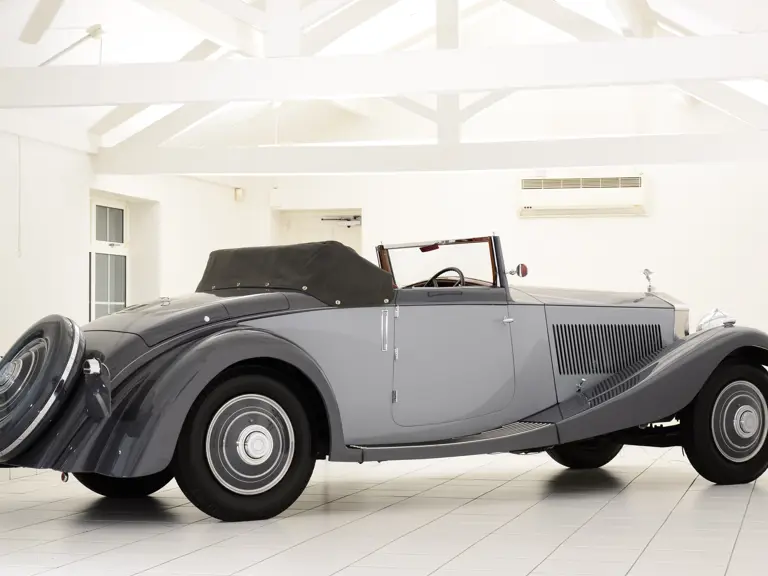

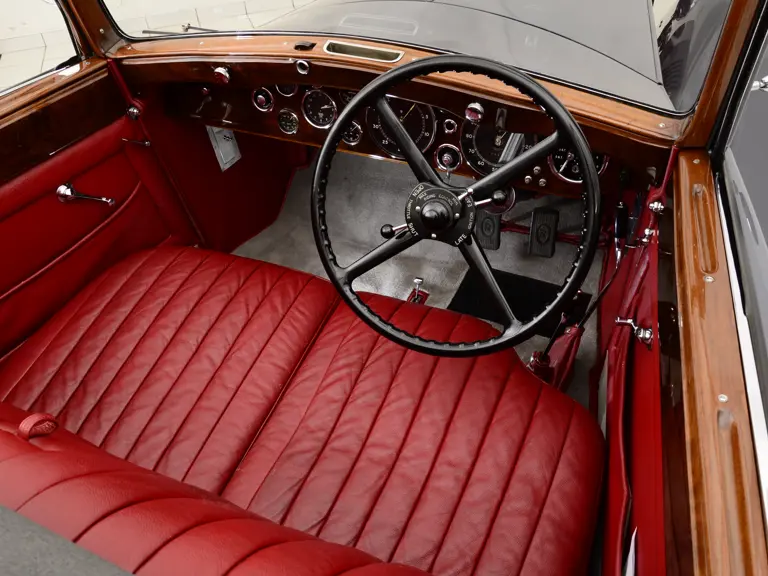
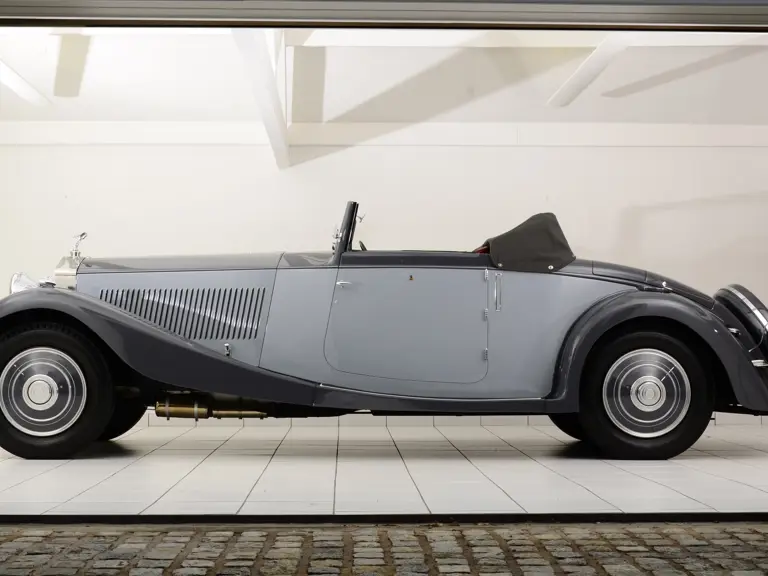
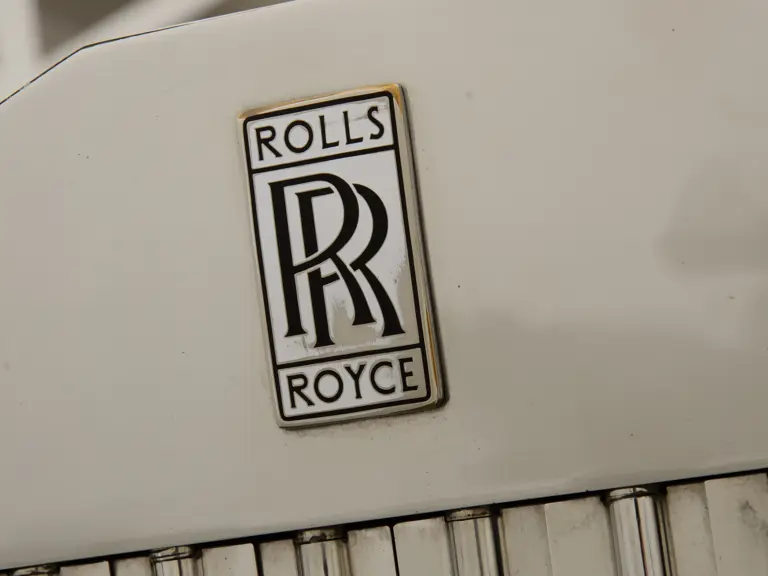
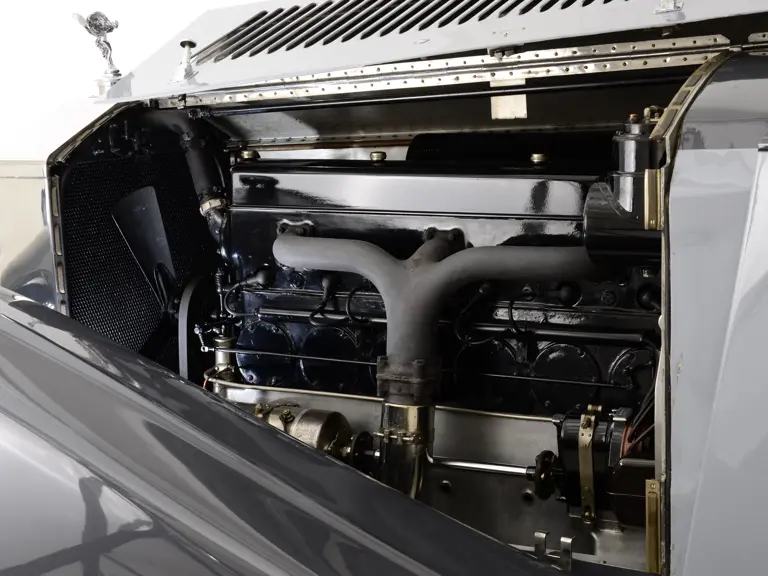
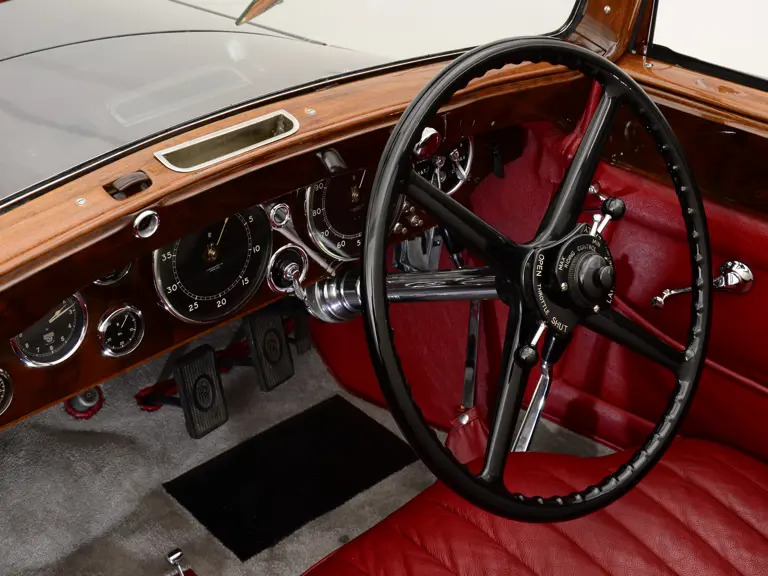
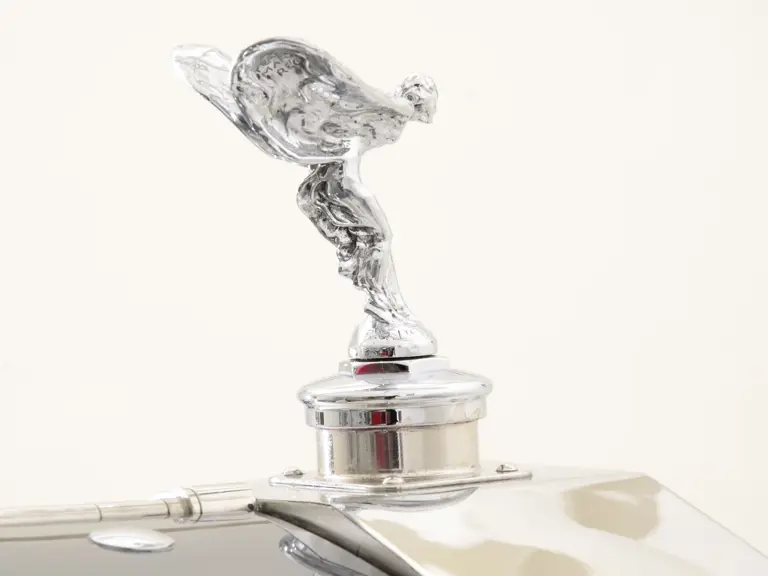
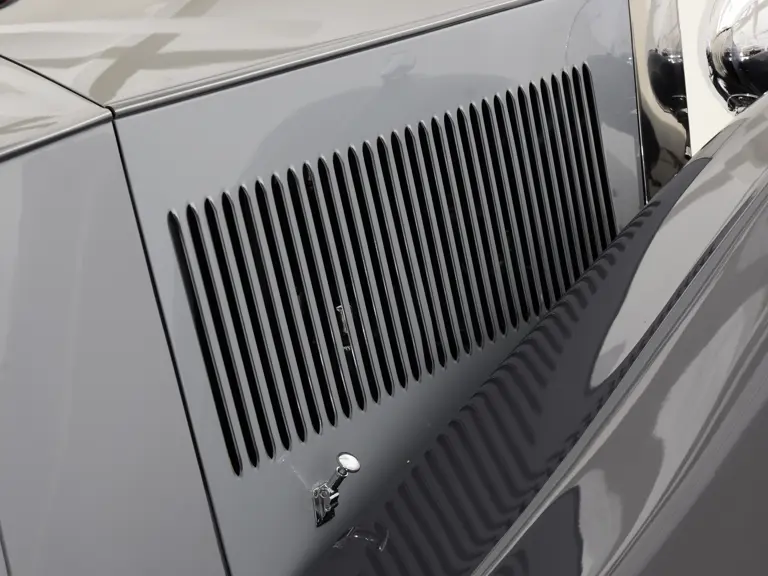


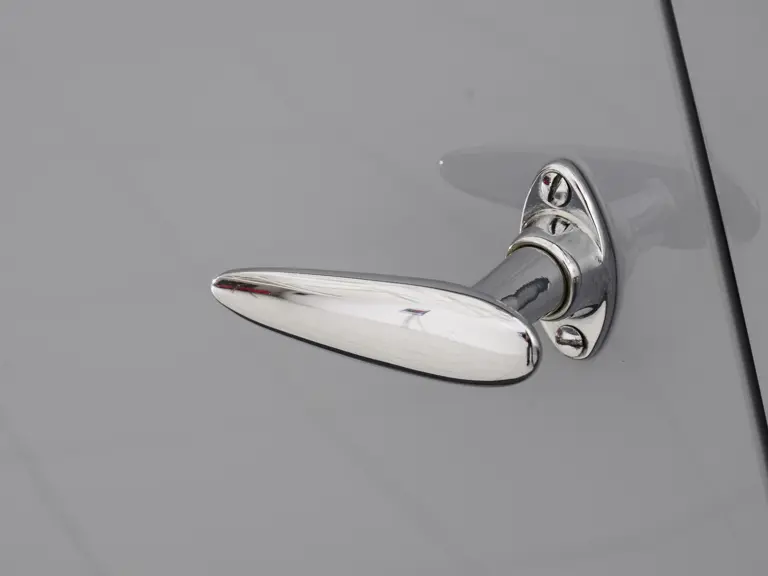
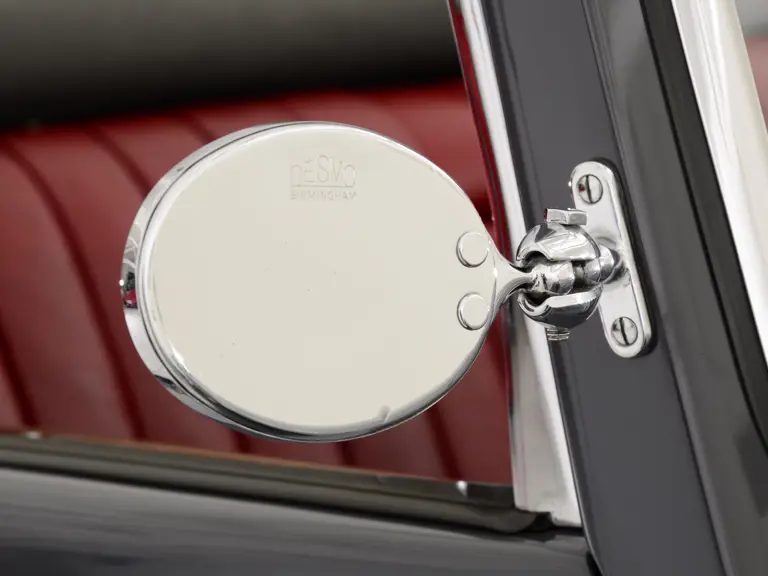
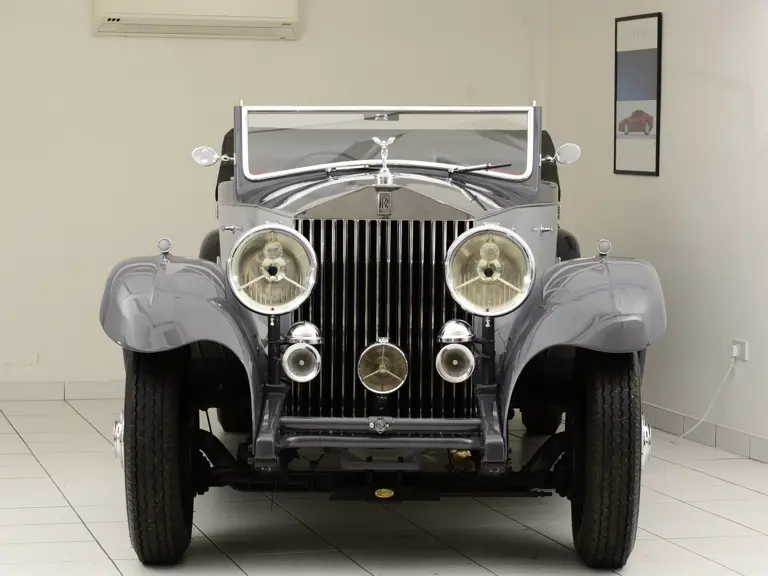
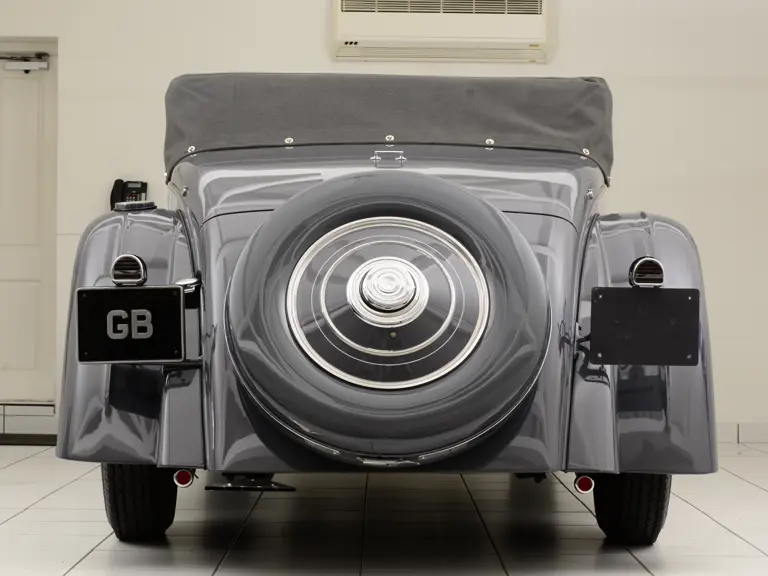
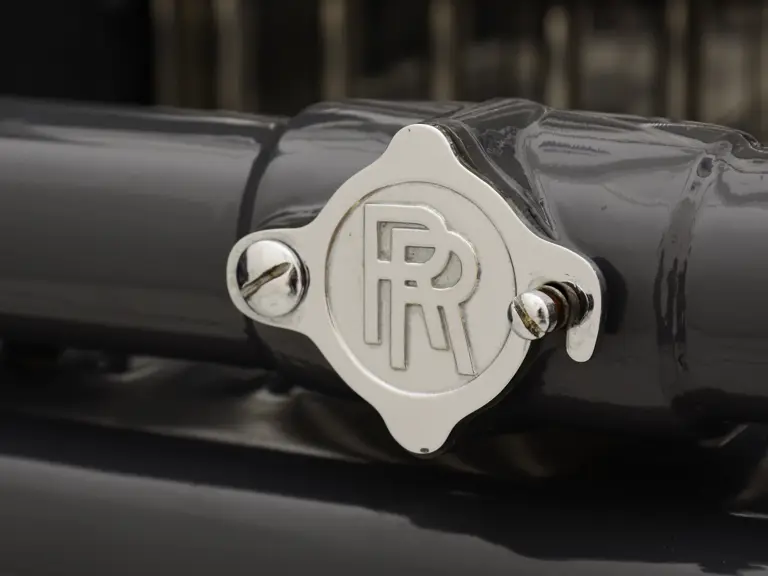
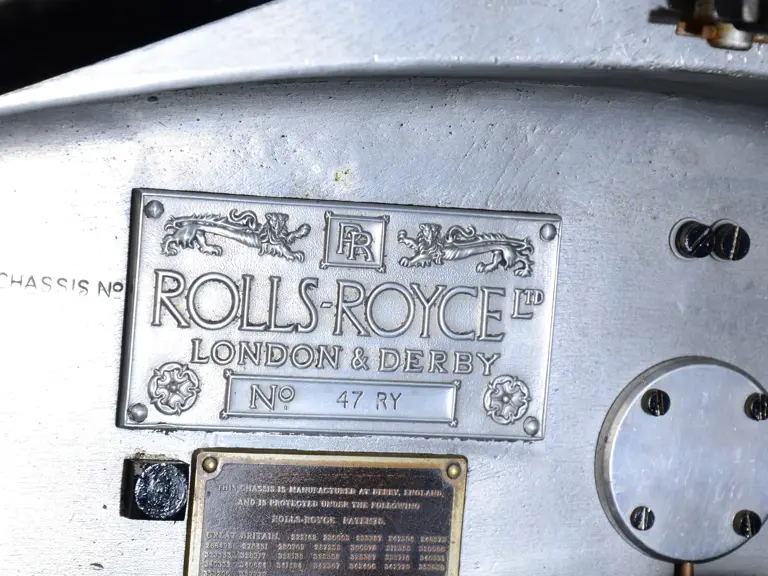
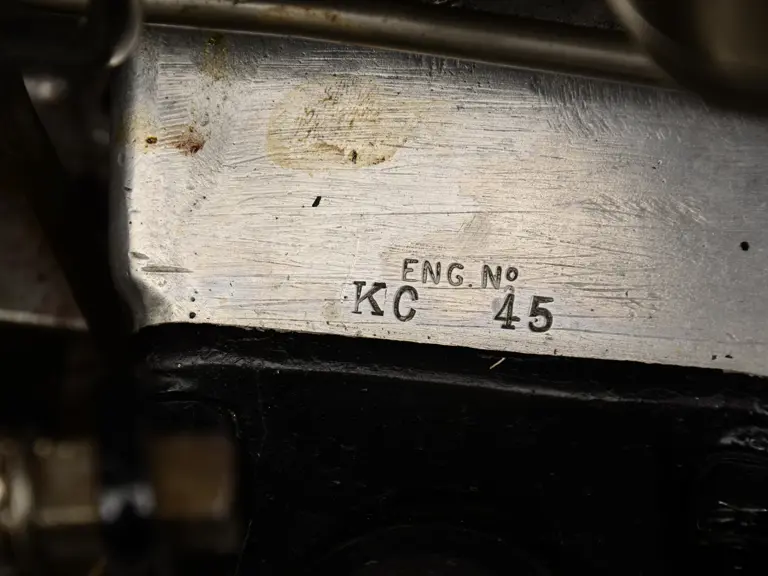
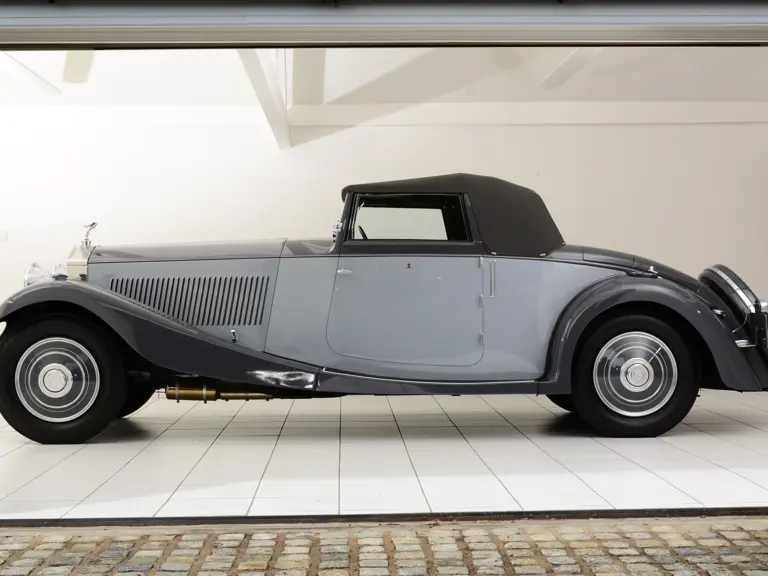
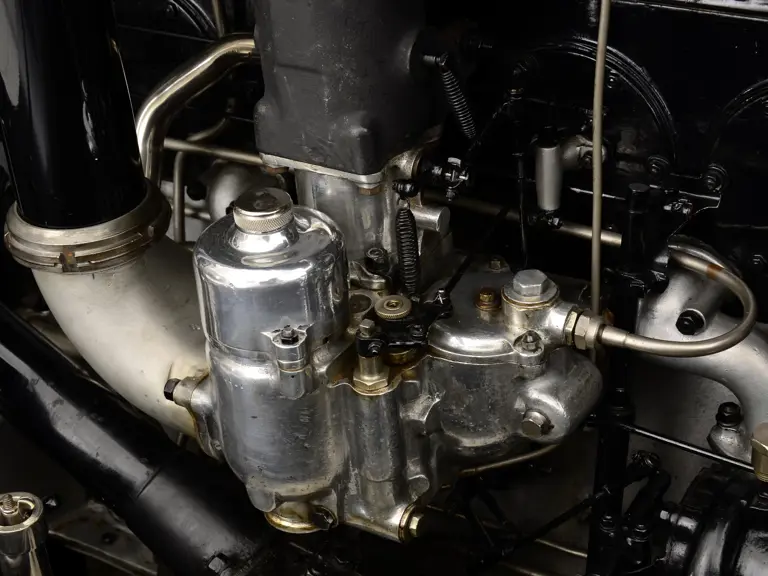
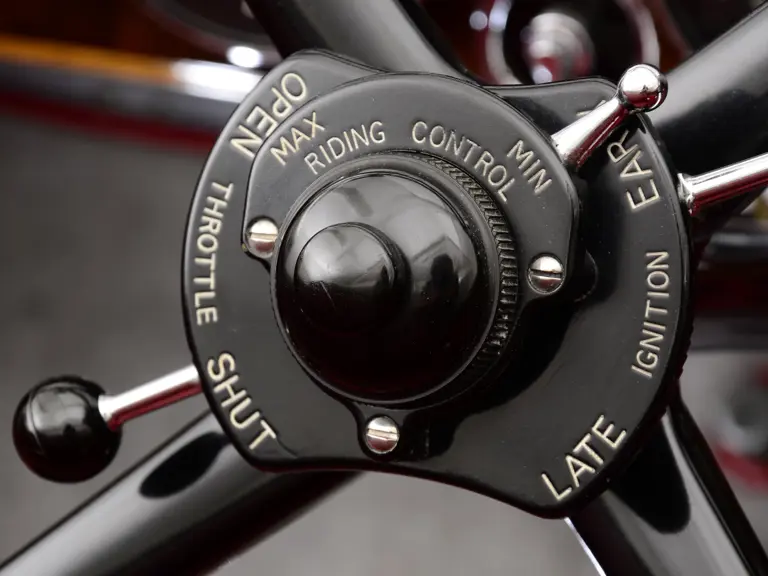


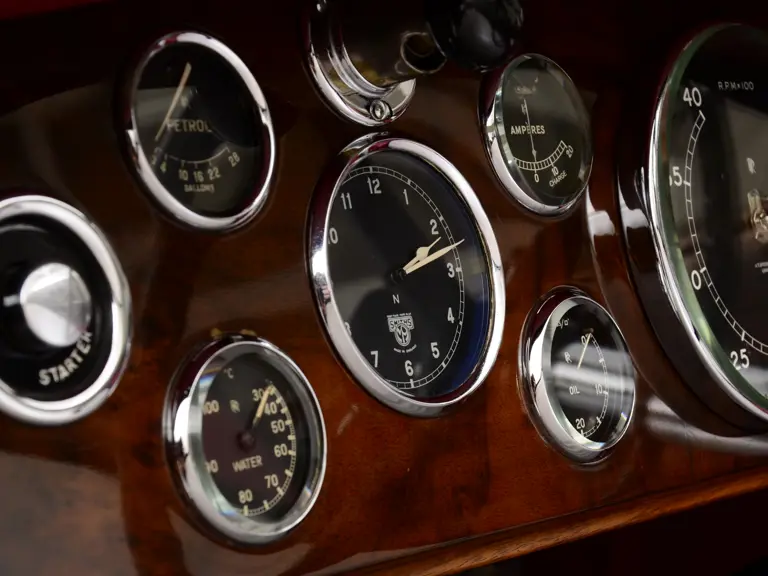





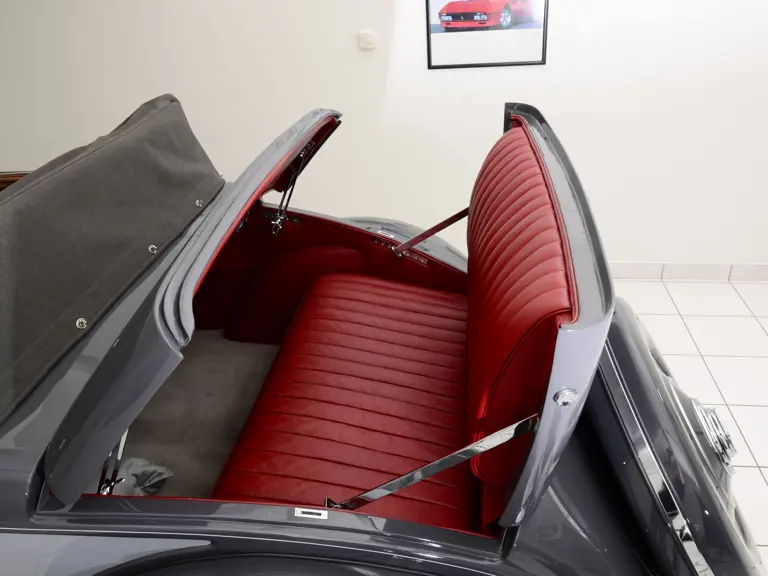
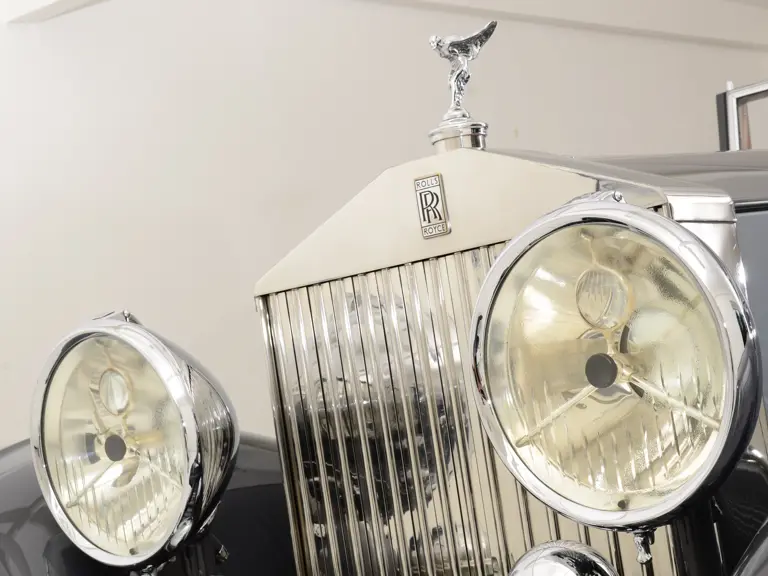


 | United Kingdom
| United Kingdom


